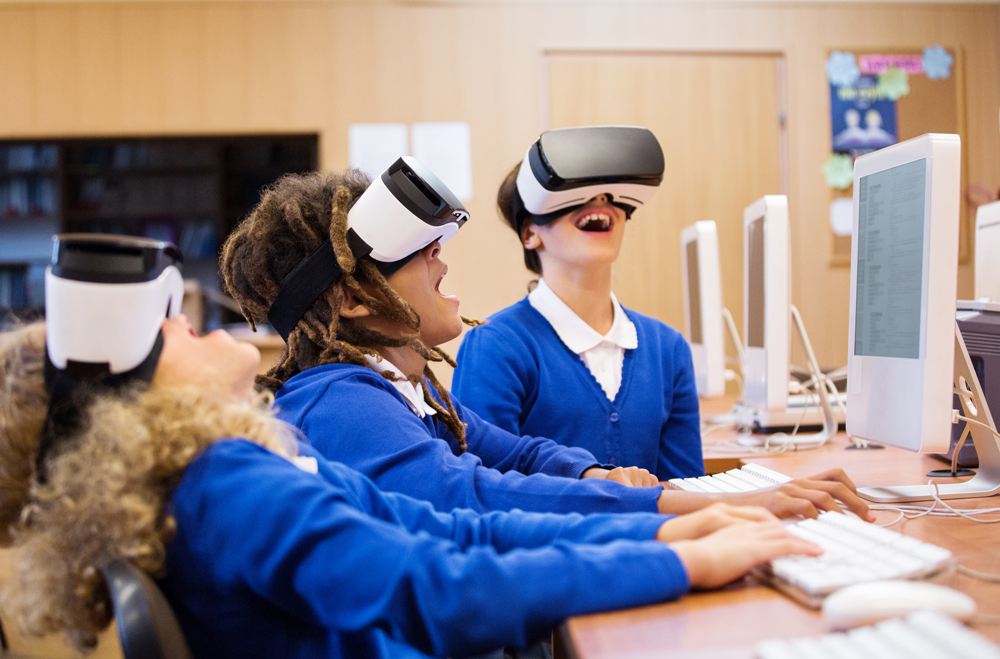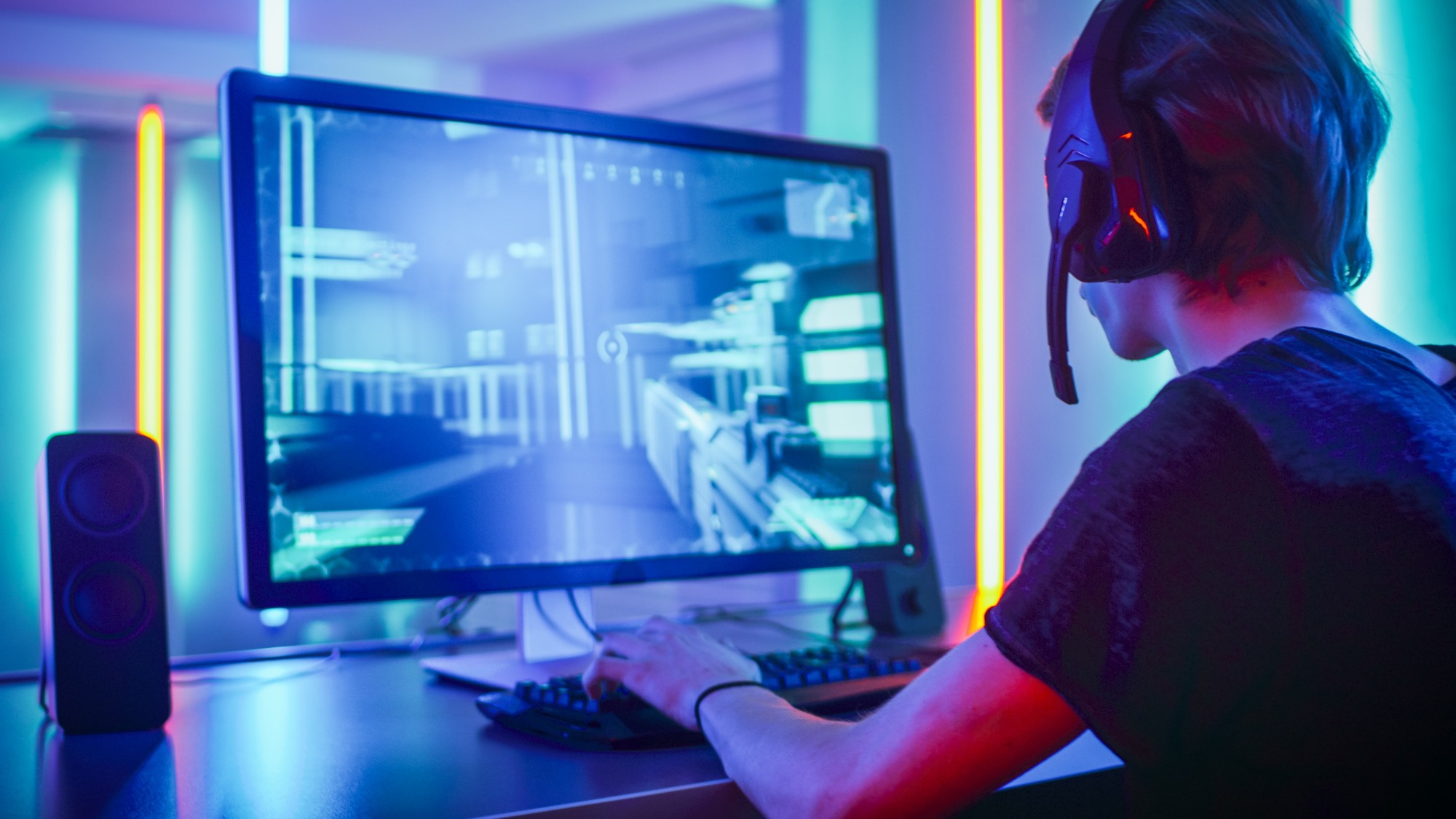Gaming Tech is no longer confined to entertainment, it’s reshaping how we work, stay healthy, and learn in 2025. From immersive simulations in job training to motion-based therapies in healthcare and gamified lessons in classrooms, gaming technology is driving innovation across industries. What once belonged to consoles and arcades now powers real-world solutions, making experiences more engaging, interactive, and effective. The evolution of Gaming Tech is changing the game far beyond play and this is just the beginning.
1. Introduction: The Evolution of Gaming Tech Beyond Entertainment

Gaming has long been associated with entertainment and leisure, but in recent years, the tech behind gaming has started shaping much more than just play. From interactive learning environments and workplace simulations to mental health support and fitness applications, gaming technology is now a versatile tool influencing critical aspects of modern life.
The innovation in gaming hardware, software, and user engagement is fueling changes across industries. In this blog, we explore how gaming tech is reshaping work, health, and education—and why it matters more than ever.
2. In the Workplace: Gamification and Virtual Training

In professional settings, gaming principles are increasingly being adopted to boost productivity and employee engagement. Known as gamification, this strategy uses rewards, challenges, and scoring systems to motivate workers and enhance performance.
Here’s how gaming tech is transforming work:
-
Virtual Reality (VR) Training: Companies like Walmart and Boeing use VR to simulate real-world scenarios, helping employees practice without real-world risks.
-
Gamified Productivity Platforms: Tools like Todoist Karma or Salesforce Trailhead gamify goal tracking and learning.
-
Remote Collaboration: Platforms such as Spatial and Virbela use 3D environments to facilitate virtual meetings, making remote work more engaging.
By turning routine tasks into rewarding experiences, tech inspired by gaming keeps employees motivated and better prepared for challenges.
3. In Healthcare: From Mental Health to Physical Fitness

Gaming tech is also revolutionizing the healthcare industry, offering new ways to treat, support, and engage patients. Whether it’s managing stress, improving motor skills, or encouraging physical activity, the gamification of health tools is proving to be effective.
Notable applications include:
-
VR Therapy: Programs like BehaVR and Oxford VR treat PTSD, anxiety, and phobias using immersive scenarios in safe environments.
-
Exergaming: Titles like Ring Fit Adventure and Beat Saber blend exercise with gaming, motivating users to stay active.
-
Neurofeedback Games: Tools like Mindleap help monitor and manage mental health through interactive cognitive training.
The intersection of gaming and health tech is creating more accessible and engaging forms of wellness support, especially for younger and tech-savvy generations.
4. In Education: Interactive Learning & Skill Building

Education is one of the most dynamic fields benefiting from gaming technology. By making lessons interactive and experiential, educators can cater to different learning styles and increase student retention.
Here’s how gaming tech enhances education:
-
Game-Based Learning Platforms: Tools like Kahoot!, Minecraft: Education Edition, and Prodigy turn lessons into games that make learning fun.
-
Simulations and AR/VR Learning: Students can explore historical sites, conduct virtual science experiments, or even dissect virtual frogs through VR.
-
Soft Skill Development: Strategy games and role-playing simulations improve decision-making, problem-solving, and collaboration skills.
By turning passive learning into active exploration, gaming tech makes education more inclusive, effective, and enjoyable.
5. The Role of AI and Data in Gaming Tech
The magic behind modern gaming doesn’t just lie in graphics—it’s powered by AI and data analytics. These elements personalize user experiences and adapt in real-time, and now, these capabilities are being applied across work, health, and education.
Examples include:
-
Adaptive Learning Systems: AI-powered platforms adjust difficulty based on the learner’s pace and performance.
-
Health Tracking in Games: Fitness games use motion sensors and real-time feedback to optimize workouts.
-
Performance Analytics in Work Simulations: AI analyzes decisions in workplace simulations and provides targeted feedback for improvement.
AI-driven tech from gaming is becoming central to creating smarter, data-informed tools that can dynamically respond to users’ needs across sectors.
6. Accessibility and Inclusivity Through Gaming Tech
Gaming technology has also opened new doors for individuals with disabilities or learning differences. By designing systems that can adapt to different abilities, it is creating a more inclusive world.
Notable developments:
-
Microsoft’s Adaptive Controller: Makes it easier for gamers with limited mobility to play.
-
VR for Autism Therapy: Programs that help autistic individuals practice social scenarios in a safe space.
-
Text-to-Speech and Motion Tracking: Tools that allow non-verbal or physically impaired individuals to interact with educational or professional platforms.
Thanks to inclusive design in gaming tech, more people than ever can access learning, therapy, and work opportunities tailored to their needs.
7. Future Outlook: A Cross-Industry Revolution
As the boundaries between games and real-life tech continue to blur, we can expect more cross-industry integration. Technologies originally designed for entertainment are becoming central to innovation in sectors that shape everyday life.
What’s next?
-
Metaverse Classrooms and Offices
-
AI-Driven Skill Certification Platforms
-
Remote Therapy and Training in VR Worlds
The trajectory of gaming tech proves that it’s not just shaping the future—it is the future.
Conclusion: Gaming Tech is More Than Just Play
Gaming is no longer a separate world—it’s deeply woven into how we learn, work, and heal. The immersive, data-rich, and adaptive nature of gaming tech makes it ideal for modern life’s evolving needs.
As developers, educators, healthcare providers, and employers begin to harness the potential of gaming technologies, it’s clear that these innovations will continue to redefine how we interact with the world around us.


